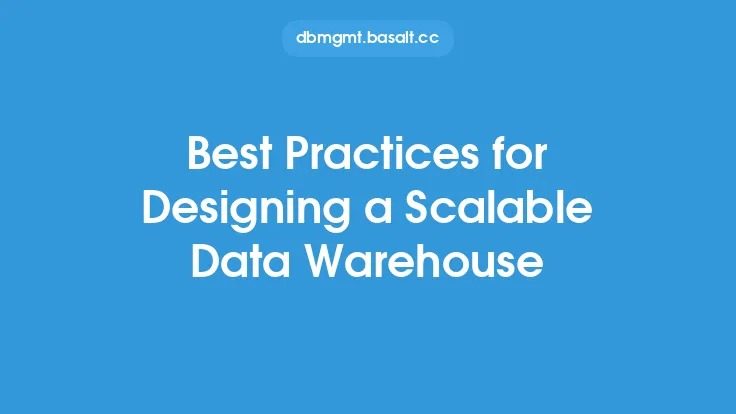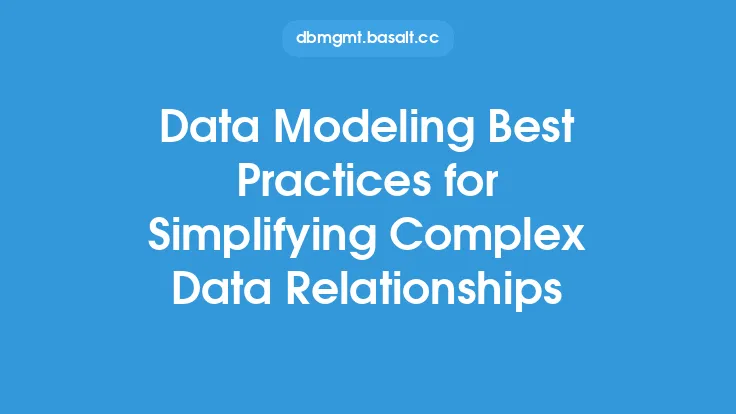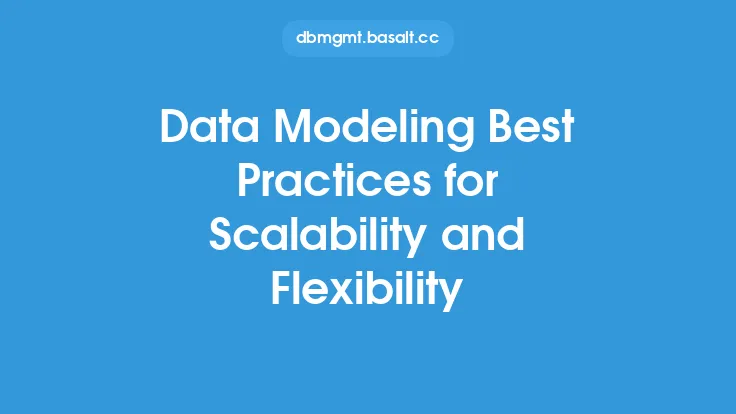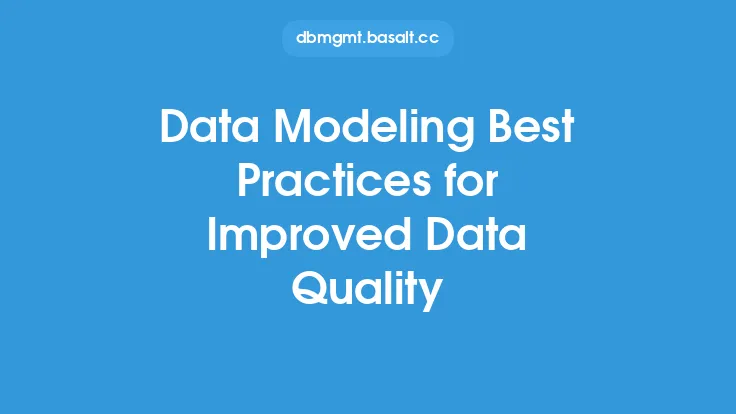When it comes to data modeling in a data warehouse environment, there are several best practices that can help ensure the success of your project. Data modeling is a critical step in the data warehousing process, as it allows you to define the structure and relationships of your data, making it easier to manage and analyze. In this article, we will explore the key best practices for data modeling in a data warehouse environment, providing you with a solid foundation for designing and implementing a robust and scalable data warehouse.
Introduction to Data Modeling
Data modeling is the process of creating a conceptual representation of your data, including the entities, attributes, and relationships that exist within your data. In the context of a data warehouse, data modeling is used to define the structure of your data, including the tables, columns, and relationships between them. A well-designed data model is essential for ensuring that your data warehouse is scalable, flexible, and easy to maintain.
Key Principles of Data Modeling
There are several key principles of data modeling that should be followed when designing a data warehouse. These principles include:
- Data normalization: This involves organizing your data into tables that are free from data redundancy and dependency. Normalization helps to eliminate data inconsistencies and ensures that your data is scalable and flexible.
- Data denormalization: This involves intentionally denormalizing your data to improve query performance. Denormalization can help to reduce the number of joins required to retrieve data, making your queries faster and more efficient.
- Data granularity: This refers to the level of detail at which your data is stored. A good data model should balance the need for detailed data with the need for summary data, ensuring that your data is both granular and aggregated.
- Data consistency: This involves ensuring that your data is consistent across your data warehouse, using standardized naming conventions, data types, and formatting.
Data Modeling Techniques
There are several data modeling techniques that can be used when designing a data warehouse. These techniques include:
- Entity-relationship modeling: This involves creating a conceptual model of your data, including the entities, attributes, and relationships that exist within your data.
- Dimensional modeling: This involves organizing your data into facts and dimensions, using a star or snowflake schema. Dimensional modeling is particularly well-suited for data warehousing, as it allows for fast and efficient querying of data.
- Object-relational modeling: This involves mapping your data to a relational database, using objects and relationships to define the structure of your data.
Data Warehouse Schema Design
A well-designed data warehouse schema is essential for ensuring that your data is organized and easily accessible. There are several schema design techniques that can be used, including:
- Star schema: This involves organizing your data into a central fact table, surrounded by dimension tables. Star schemas are simple and easy to maintain, making them a popular choice for data warehousing.
- Snowflake schema: This involves extending the star schema, by adding additional dimension tables that are related to the central fact table. Snowflake schemas are more complex than star schemas, but offer improved data granularity and flexibility.
- Galaxy schema: This involves using multiple fact tables, each with its own set of dimension tables. Galaxy schemas are useful for modeling complex data relationships, but can be more difficult to maintain than star or snowflake schemas.
Data Modeling Tools and Technologies
There are several data modeling tools and technologies that can be used to design and implement a data warehouse. These tools include:
- Entity-relationship diagramming tools: These tools allow you to create conceptual models of your data, including entities, attributes, and relationships.
- Data modeling software: These tools provide a graphical interface for designing and implementing your data model, including support for data normalization, denormalization, and schema design.
- Database management systems: These systems provide a platform for implementing your data warehouse, including support for data storage, querying, and retrieval.
Best Practices for Data Modeling
There are several best practices that should be followed when data modeling in a data warehouse environment. These best practices include:
- Involve stakeholders in the data modeling process: This ensures that your data model meets the needs of your business, and that all stakeholders are aligned and informed.
- Use standardized naming conventions and data types: This helps to ensure that your data is consistent and easily accessible, reducing the risk of errors and inconsistencies.
- Use data modeling tools and technologies: These tools can help to streamline the data modeling process, reducing the risk of errors and improving the overall quality of your data model.
- Test and validate your data model: This ensures that your data model is accurate and complete, and that it meets the needs of your business.
Conclusion
Data modeling is a critical step in the data warehousing process, allowing you to define the structure and relationships of your data. By following the key principles of data modeling, using data modeling techniques and tools, and designing a well-organized data warehouse schema, you can create a robust and scalable data warehouse that meets the needs of your business. Remember to involve stakeholders in the data modeling process, use standardized naming conventions and data types, and test and validate your data model to ensure that it is accurate and complete. By following these best practices, you can create a data warehouse that is flexible, scalable, and easy to maintain, providing a solid foundation for business intelligence and data analytics.





